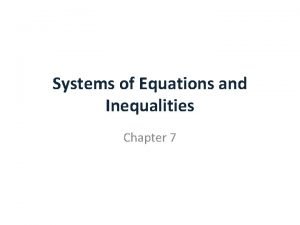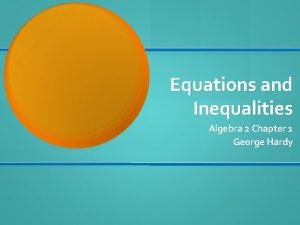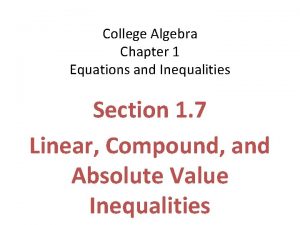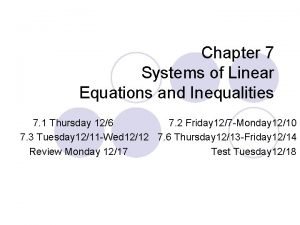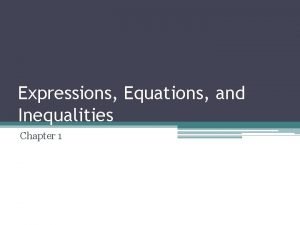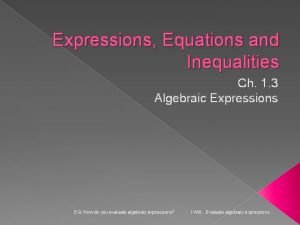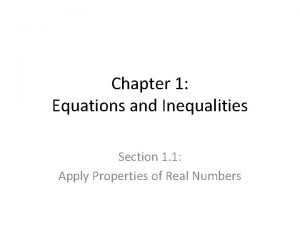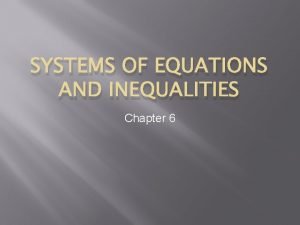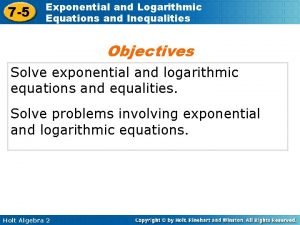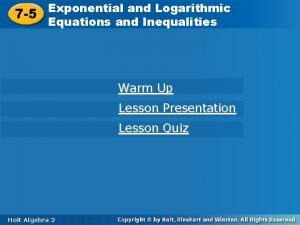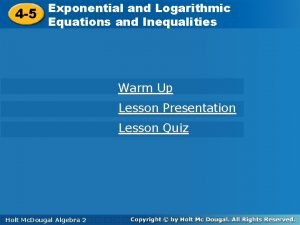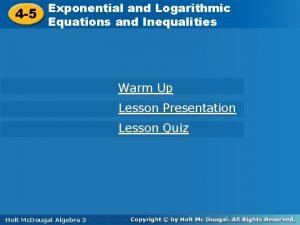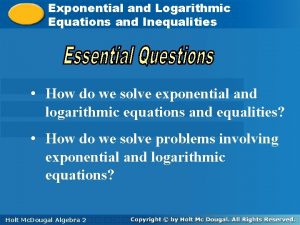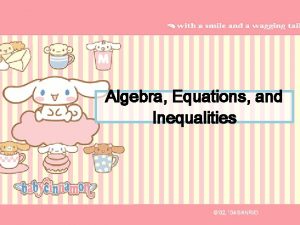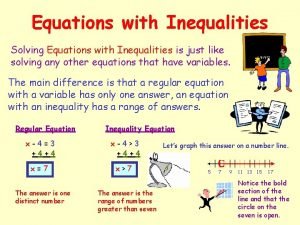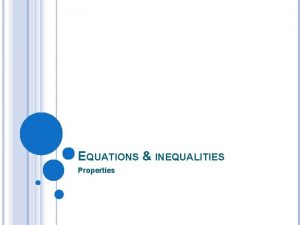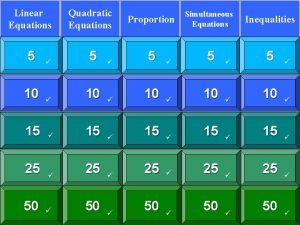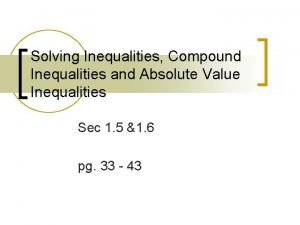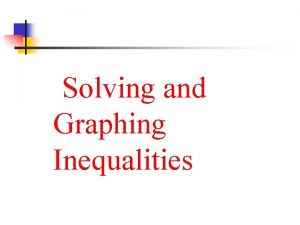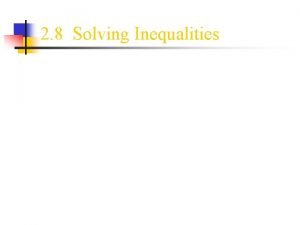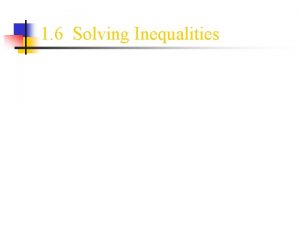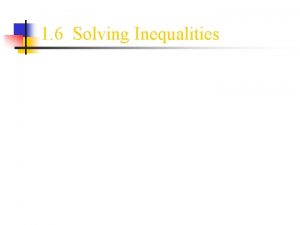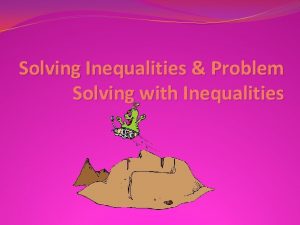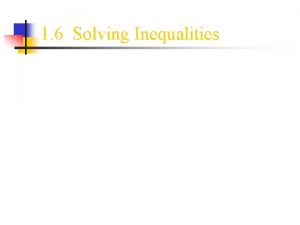Chapter 1 Equations and Inequalities Section 1 1












- Slides: 12

Chapter 1: Equations and Inequalities Section 1. 1: Apply Properties of Real Numbers

Subsets of the Real Numbers The real numbers consist of the rational numbers and the irrational numbers. Two subsets of the rational numbers are the whole numbers (0, 1, 2, 3, …) and the integers (…, -3, -2, -1, 0, 1, 2, 3, …).

Rational Numbers • Can be written as quotients of integers. • Can be written as decimals that terminate or repeat. Examples: ¾ = 0. 75 -4 16

Irrational Numbers • Cannot be written as quotients of integers. • Cannot be written as decimals. Examples:

Properties of Addition and Multiplication Let a, b, and c be real numbers. Property Addition Multiplication Closure a + b is a real number ab is a real number Commutative a+b=b+a ab = ba Associative (a + b) + c = a + (b + c) (ab)c = a(bc) Identity a+0=a a∙ 1=a Inverse a + (-a) = 0 a ∙ 1/a = 1 *a ≠ 0 Distributive a(b + c) = ab + ac

Subtraction is defined as adding the opposite. The opposite (or additive inverse) of any number b is –b. Division is defined as multiplying the reciprocal. The reciprocal (or multiplicative inverse) of any nonzero number b is 1/b.

Example 1: Graph the real numbers and on a # line.

Example 2: Identify the property that the statement illustrates. a. 5 + (9 + 12) = (5 + 9) + 12 Associative property of addition b. 250 ∙ 1 = 250 Identity property of multiplication c. 8 ∙ 2 = 2 ∙ 8 Commutative property of multiplication d. 11 + -11 = 0 Inverse property of addition

HOMEWORK (Day 1) pg. 6; 8 – 16

Example 3: Use the properties and definitions of operations to show that (10 ÷ c) ∙ c = 10 when c ≠ 0. Justify each step.

Example 4: Use unit analysis to answer the following. a. You work 8 hours and earn $60. What is your earning rate? $7. 50 per hour b. You buy 18 gallons of gasoline at $2. 65 per gallon. What is your total cost? $47. 70 c. You drive 60 kilometers per hour. What is your speed in miles per hour? about 37 miles per hour

HOMEWORK (Day 2) pg. 6 – 7; 17, 18, 28 – 38, 47 – 48
 Chapter 7 systems of equations and inequalities
Chapter 7 systems of equations and inequalities Chapter 1 equations and inequalities
Chapter 1 equations and inequalities Chapter 1 equations and inequalities
Chapter 1 equations and inequalities Chapter 7 systems of equations and inequalities answers
Chapter 7 systems of equations and inequalities answers Chapter 1 expressions equations and inequalities
Chapter 1 expressions equations and inequalities Chapter 1 expressions equations and inequalities
Chapter 1 expressions equations and inequalities Chapter 1 equations and inequalities
Chapter 1 equations and inequalities Chapter 6 systems of equations and inequalities
Chapter 6 systems of equations and inequalities 7-5 exponential and logarithmic equations
7-5 exponential and logarithmic equations 7-5 practice exponential and logarithmic equations
7-5 practice exponential and logarithmic equations Solving logarithmic inequalities
Solving logarithmic inequalities Exponential equations examples
Exponential equations examples Exponential and logarithmic equations and inequalities
Exponential and logarithmic equations and inequalities
